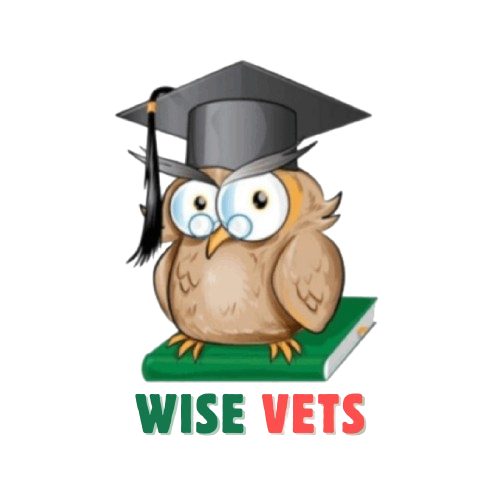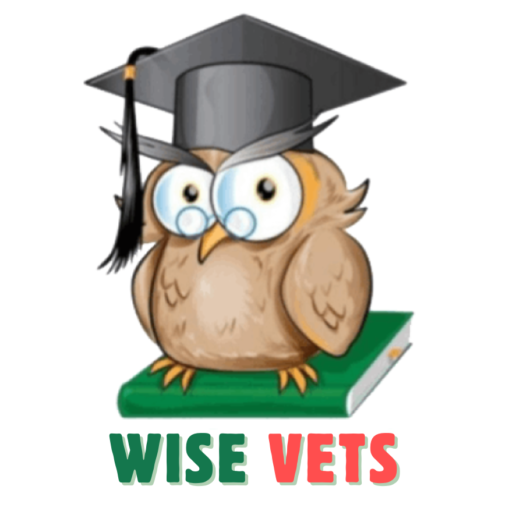Understanding Animal Diseases
Animal diseases pose significant challenges to both veterinarians and pet owners. By understanding the importance of biosecurity and the mechanisms of zoonotic transmission, we can better safeguard the health of animals and ourselves.
Importance of Biosecurity
Biosecurity is critical in preventing the spread of animal diseases. Good biosecurity practices help to reduce the risk of disease exposure to workers, visitors, and the animals themselves. According to GOV.UK, diseases can spread through various means, including insects, contaminated veterinary equipment, and zoonotic transmission between humans and animals. Implementing stringent biosecurity measures in a veterinary clinic or farm setting is crucial for controlling outbreaks.
Some essential biosecurity practices include:
- Regular cleaning and disinfection of facilities and equipment
- Controlling the movement of people and animals
- Quarantining new or sick animals
- Using personal protective equipment (PPE)
Zoonotic Transmission
Zoonotic diseases are infections that can be transmitted between animals and humans. These diseases are quite common, with CDC reporting that over 60% of known infectious diseases in humans can be spread from animals, and 75% of new or emerging infectious diseases originate from animals. Understanding how zoonotic diseases spread is vital for effective prevention and control.
| Transmission Method | Example |
|---|---|
| Direct Contact | Petting or touching animals, bites or scratches |
| Indirect Contact | Contaminated surfaces, pet habitats, soil |
| Foodborne Transmission | Unpasteurized milk, undercooked meat, contaminated produce |
| Waterborne Transmission | Contaminated water sources |
Direct Contact Transmission
Direct contact with infected animals through saliva, blood, urine, mucous, feces, or other body fluids can lead to zoonotic disease transmission. Activities like petting or handling animals, and receiving bites or scratches, are common ways diseases can spread (CDC).
Indirect Contact Transmission
Indirect contact involves the transmission of diseases through contaminated environments or objects. For example, areas where animals live and roam, such as chicken coops, barns, and pet habitats, can harbor pathogens. Contaminated surfaces like pet food and water dishes also pose risks (CDC).
Foodborne Transmission
Foodborne transmission occurs when people or animals consume contaminated food. Common sources include unpasteurized milk, undercooked meat or eggs, and raw fruits and vegetables contaminated with feces from infected animals. Ensuring food safety is an essential part of preventing zoonotic diseases.
Waterborne Transmission
Waterborne transmission involves the spread of diseases through contaminated water sources. Ensuring clean water supplies for both humans and animals is crucial in preventing the spread of zoonotic diseases.
Understanding these transmission methods helps veterinarians and pet owners implement effective strategies to prevent and control zoonotic diseases. For more information on veterinary science and related topics, explore our comprehensive guides on veterinary medicine and veterinary care.
Spread of Zoonotic Diseases
Understanding how zoonotic diseases spread is crucial for safeguarding both animal and human health. These diseases can spread through several routes, including direct contact, indirect contact, foodborne, and waterborne transmission.
Direct Contact Transmission
Direct contact transmission occurs when there is physical interaction with an infected animal. This can happen through saliva, blood, urine, mucous, feces, or other body fluids. For instance, petting or touching animals, and bites or scratches can lead to the spread of zoonotic diseases (CDC).
| Mode of Contact | Examples |
|---|---|
| Saliva | Petting animals, bites |
| Blood | Handling wounded animals |
| Urine | Cleaning animal habitats |
| Mucous | Close interaction with animals |
Indirect Contact Transmission
Indirect contact transmission occurs when we interact with areas or objects contaminated with germs from infected animals. This can include aquarium tank water, pet habitats, chicken coops, barns, plants, soil, as well as pet food and water dishes.
| Contaminated Areas | Examples |
|---|---|
| Animal habitats | Chicken coops, barns |
| Water sources | Aquarium water |
| Surfaces | Pet food dishes, soil |
Foodborne Transmission
Foodborne transmission is a significant concern for both people and animals. Consuming contaminated food can lead to illness. Unsafe consumption of unpasteurized (raw) milk, undercooked meat or eggs, and raw fruits and vegetables contaminated with feces from infected animals are common examples.
| Contaminated Food | Examples |
|---|---|
| Dairy products | Unpasteurized milk |
| Meat and eggs | Undercooked meat or eggs |
| Produce | Raw fruits and vegetables |
Waterborne Transmission
Waterborne transmission occurs through drinking or coming in contact with water contaminated with feces from an infected animal (CDC). This can happen in various environments, such as lakes, rivers, and even contaminated drinking water supplies.
| Source of Contamination | Examples |
|---|---|
| Natural water bodies | Lakes, rivers |
| Drinking water | Contaminated water supplies |
Understanding these transmission routes helps us implement effective biosecurity measures in veterinary clinics and veterinary care settings. For more information, explore our sections on veterinary medicine and veterinary science.
Types of Animal Diseases
In the realm of veterinary science, understanding the various types of animal diseases is crucial for effective diagnosis and treatment. Animal diseases can be broadly categorized into bacterial, viral, parasitic, and fungal diseases.
Bacterial Diseases
Bacterial diseases are caused by both Gram-negative and Gram-positive bacteria. These pathogens are responsible for a significant proportion of zoonotic diseases. According to NCBI, approximately 42% of zoonotic pathogens originating from bovine sources are bacterial in nature. Some common bacterial zoonotic diseases include anthrax, salmonellosis, tuberculosis, Lyme disease, brucellosis, and plague.
| Disease | Pathogen | Animal Hosts |
|---|---|---|
| Anthrax | Bacillus anthracis | Cattle, sheep, goats |
| Salmonellosis | Salmonella spp. | Poultry, reptiles |
| Tuberculosis | Mycobacterium bovis | Cattle, deer |
| Lyme Disease | Borrelia burgdorferi | Deer, rodents |
| Brucellosis | Brucella spp. | Cattle, pigs |
Viral Diseases
Viral diseases are caused by a variety of viruses, with RNA viruses being more frequently associated with zoonoses compared to DNA viruses. Some well-known viral zoonotic diseases include rabies, AIDS, Ebola, and avian influenza.
| Disease | Virus | Animal Hosts |
|---|---|---|
| Rabies | Rabies virus | Dogs, bats |
| AIDS | HIV (Human Immunodeficiency Virus) | Primates |
| Ebola | Ebola virus | Bats, primates |
| Avian Influenza | Influenza A virus | Birds |
Parasitic Diseases
Parasitic diseases are very common, with scientists estimating that more than 6 out of every 10 known infectious diseases in people can be spread from animals, and 3 out of every 4 new or emerging infectious diseases in people come from animals (CDC). Common parasitic zoonotic diseases include trichinosis, toxoplasmosis, and malaria.
| Disease | Parasite | Animal Hosts |
|---|---|---|
| Trichinosis | Trichinella spiralis | Pigs, wild game |
| Toxoplasmosis | Toxoplasma gondii | Cats |
| Malaria | Plasmodium spp. | Primates, birds |
Fungal Diseases
Fungal diseases are caused by various fungi and are a threat to both livestock and companion animals. Infectious diseases caused by fungi can lead to significant health issues. According to Oklahoma State University Extension, some protozoan diseases behave much like infectious diseases and should be classed with other parasitic illnesses.
| Disease | Fungus | Animal Hosts |
|---|---|---|
| Ringworm | Dermatophytes | Cattle, dogs, cats |
| Aspergillosis | Aspergillus spp. | Birds, mammals |
| Candidiasis | Candida spp. | Birds, mammals |
Understanding these types of animal diseases helps us to better prepare and protect the health of both animals and humans. For more information on how to safeguard animal health, visit our articles on veterinary care and veterinary clinic.
Defense Mechanisms Against Diseases
Understanding the defense mechanisms animals deploy against diseases is essential for providing effective veterinary care. In this section, we explore immunity and resistance, acquired immunity, and the symptoms and lesions that indicate disease.
Immunity and Resistance
Immunity is the ability to resist infection, while resistance is often used interchangeably with immunity. Animals possess two primary protective mechanisms: those that prevent the invasion of pathogens and those that combat invaders once inside the body.
The body employs various strategies to fend off diseases:
- Barrier Defenses: Intact skin, mucous membranes, and secretions act as physical barriers.
- Innate Immunity: White blood cells and circulating antibodies are among the first responders to infection.
These mechanisms work together to ensure that potential threats are neutralized before they can cause significant harm.
Acquired Immunity
Acquired immunity is a more controllable form of defense that can be intentionally utilized through vaccinations. This type of immunity involves the production of antibodies, which are proteins found in the globulin fraction of blood serum. These antibodies are specifically tailored to combat the organism that triggered their production (Oklahoma State University Extension).
Key aspects of acquired immunity include:
- Vaccination: A method to stimulate the immune system to produce specific antibodies without causing the disease.
- Memory Cells: These cells “remember” the specific pathogens and provide a quicker and stronger response upon subsequent exposures.
Symptoms and Lesions
Detecting the signs of disease early is crucial for timely intervention. Symptoms are the detectable signs that indicate an animal is suffering from an illness. Lesions, on the other hand, are visible changes in the size, color, shape, or structure of an organ (Oklahoma State University Extension).
Common symptoms of animal diseases include:
- Loss of body weight
- Decreased production
- Reduced feed consumption
- Droopiness
- Lameness
| Symptom | Description |
|---|---|
| Loss of body weight | Decrease in overall weight |
| Decreased production | Lower output of milk, eggs, etc. |
| Reduced feed consumption | Less interest in eating |
| Droopiness | Lack of energy or alertness |
| Lameness | Difficulty in walking or movement |
Recognizing these symptoms and understanding the underlying lesions can help veterinarians provide effective treatment. For more information on how to detect and manage animal diseases, visit our section on veterinary science.
By familiarizing ourselves with these defense mechanisms, we can better protect the health of the animals in our care, ensuring they live healthy and productive lives.
Impact of Zoonoses
Zoonotic diseases are a significant concern in veterinary science. Understanding the factors influencing these diseases, the pathogens responsible, and their transmission patterns is essential for veterinarians.
Factors Influencing Zoonotic Diseases
Several factors contribute to the emergence and spread of zoonotic diseases. According to the NCBI, more than 60% of human pathogens are zoonotic in origin. Factors such as climate change, urbanization, animal migration, trade, travel, vector biology, and both anthropogenic and natural elements significantly impact the distribution and patterns of zoonoses. The following table summarizes these factors:
| Influencing Factors | Impact on Zoonotic Diseases |
|---|---|
| Climate Change | Alters habitats, influencing vector and host behavior |
| Urbanization | Increases human-wildlife interactions |
| Animal Migration and Trade | Facilitates spread of pathogens |
| Travel and Tourism | Expands disease reach globally |
| Vector Biology | Affects vector efficiency and pathogen transmission |
| Anthropogenic Factors | Increases exposure through activities like farming |
| Natural Factors | Includes environmental and ecological changes |
Pathogens Causing Zoonoses
Zoonotic diseases are caused by a wide range of pathogens. The NCBI identifies several types:
- Bacterial Zoonoses: Includes anthrax, salmonellosis, tuberculosis, Lyme disease, brucellosis, and plague.
- Viral Zoonoses: Encompasses rabies, AIDS, Ebola, and avian influenza.
- Parasitic Zoonoses: Covers trichinosis, toxoplasmosis, and malaria.
- Fungal Zoonoses: Includes various fungal infections.
- Other Pathogens: Rickettsial, chlamydial, mycoplasma, protozoal zoonoses, and acellular non-viral pathogenic agents.
Transmission Patterns
The transmission of zoonotic diseases depends on interactions among wild animals, domestic animals, and humans. The NCBI outlines several factors impacting transmission:
- Human Population Growth: Rapid increases in population lead to more human-animal interactions.
- Global Travel: Ease of travel facilitates the quick spread of diseases.
- Animal Exposure: Increased exposure to animals and animal products raises infection risks.
- Wildlife Farming and Hunting: Handling and transporting wildlife contribute to pathogen spread.
- Consumption of Wild Meat: Eating wild meat can introduce new pathogens.
- Agricultural Practices: Different practices affect disease transmission among livestock and humans.
Understanding these factors helps us mitigate the risks associated with zoonotic diseases. For more information on related topics, visit our articles on veterinary care and veterinary medicine.
Emerging Zoonotic Diseases
Zoonotic diseases, which are diseases transmitted from animals to humans, are an ever-present concern in our field of veterinary science. Understanding the factors influencing their emergence, their impact on various populations, and the measures we can take for prevention and control is crucial.
Factors Influencing Emergence
The emergence of zoonotic diseases is influenced by various factors. Climate change, urbanization, animal migration, and global trade are significant contributors. These factors can alter the habitats of wildlife, leading to increased contact between humans and animals, thereby facilitating the transmission of pathogens.
| Factor | Influence |
|---|---|
| Climate Change | Alters habitats and migration patterns |
| Urbanization | Increases human-animal interactions |
| Global Trade | Facilitates pathogen spread across borders |
| Travel & Tourism | Enhances disease transmission opportunities |
Additionally, anthropogenic activities such as wildlife farming, hunting, and handling of wild animals for consumption also play a significant role. The rapid increase in human population and the ease of both local and global travel further exacerbate the situation, making it easier for zoonotic diseases to spread (NCBI).
Impact on Wildlife, Domestic Animals, and Humans
Zoonotic diseases have far-reaching impacts on wildlife, domestic animals, and humans. Wildlife populations can serve as reservoirs for pathogens, which can then be transmitted to domestic animals and humans. This not only affects biodiversity but also disrupts ecosystems.
| Population | Impact |
|---|---|
| Wildlife | Reservoirs for pathogens, biodiversity loss |
| Domestic Animals | Disease outbreaks, economic losses |
| Humans | Health crises, economic burden |
For domestic animals, outbreaks of zoonotic diseases can lead to significant economic losses in the agriculture and farming industries. The health of domestic animals directly affects our food supply and economy. In humans, zoonotic diseases can lead to severe health crises, as seen with pandemics like COVID-19. The economic burden on healthcare systems and the broader economy can be substantial.
Prevention and Control Measures
Preventing and controlling zoonotic diseases requires a multi-faceted approach. Biosecurity measures, surveillance, and monitoring are essential in identifying and controlling outbreaks early. It’s important to implement strict biosecurity protocols in veterinary clinics and farms to prevent the introduction and spread of pathogens.
| Measure | Description |
|---|---|
| Biosecurity | Protocols to prevent pathogen introduction |
| Surveillance | Monitoring and early detection of outbreaks |
| Public Awareness | Educating communities about zoonotic risks |
| Vaccination | Immunization programs for at-risk populations |
Public awareness and education campaigns can help communities understand the risks associated with zoonotic diseases and adopt preventive practices. Vaccination programs for both animals and humans can also play a crucial role in controlling the spread of zoonotic pathogens.
For more detailed information on the impact of zoonotic diseases and defense mechanisms, you can explore our articles on veterinary care and veterinary medicine.
By understanding these factors, impacts, and measures, we can better safeguard animal and human health against the threat of emerging zoonotic diseases.






